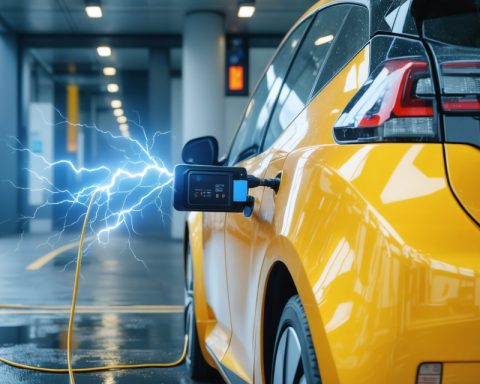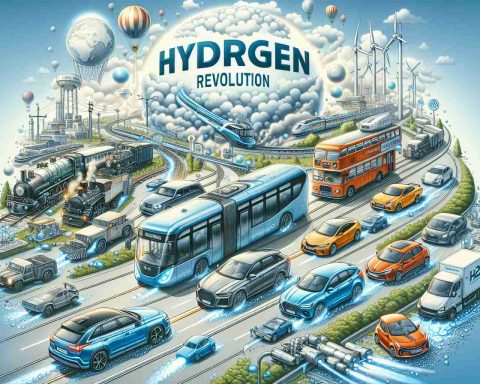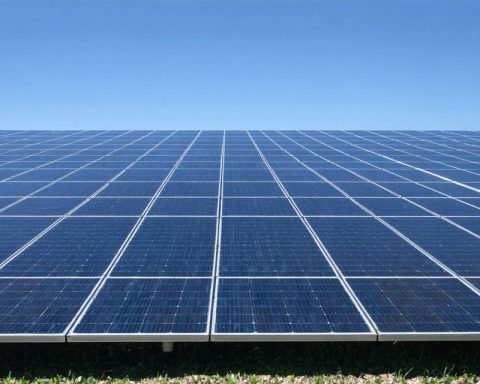- The Midcontinent Rift beneath Lake Superior contains vast reserves of natural hydrogen, with the potential to transform the global energy landscape.
- Hydrogen energy could significantly surpass global GDP and fuel a shift away from fossil fuels towards a sustainable future.
- Hydrogen’s applications span transportation, industry, and energy, offering pathways to decarbonize and reduce carbon footprints.
- Fuel cells utilizing hydrogen can ensure stable power supply, complementing intermittent renewable sources like solar and wind.
- Challenges include developing advanced drilling techniques, and improving storage and transport infrastructure for hydrogen.
- Global cooperation is essential, as countries may uncover their own hydrogen reserves, influencing local and global energy policies.
Beneath the serene surface of Lake Superior lies a dormant giant—a geological rift concealing vast reserves of natural hydrogen. This billion-year-old volcanic structure, known as the Midcontinent Rift, has the potential to reshape the energy landscape. Imagine an energy source so prolific it could dwarf global GDP estimates 1,300 times over. Researchers believe these untapped reserves could fuel a shift away from fossil fuels, paving the way for a cleaner, more sustainable future.
Envision towering wind turbines beside hydrogen-powered vehicles gliding silently along highways, all powered by the promise of zero emissions. Hydrogen’s potential applications stretch across multiple sectors. In transportation, it offers a path to decarbonize cars, trains, and even airplanes. Industries dependent on fossil fuels could pivot to hydrogen-based processes, reducing carbon footprints drastically. With fuel cells, hydrogen becomes the linchpin of uninterrupted power supply, ironing out the unpredictability of solar and wind energies.
Yet, the path to this energy utopia is fraught with challenges. The hydrogen lies deep beneath the earth, demanding cutting-edge drilling innovations. Scientists and engineers face the crucial task of developing methods that respect environmental integrity while optimizing cost-efficiency. Moreover, the task of safely storing and transporting this elusive gas requires significant upgrades to current infrastructure.
Global cooperation is the key. Nations like France might find themselves on the cusp of their own hydrogen discoveries, transforming local and global energy strategies. As countries around the world contemplate this hydrogen horizon, a new era beckons—a revolution fueled by the simplest, yet most powerful, element known.
Unleashing Hydrogen’s Power: Lake Superior’s Hidden Treasure
How-To Steps & Life Hacks for Harnessing Hydrogen
1. Exploration and Drilling:
– Use advanced seismic imaging technology to identify hydrogen-rich zones within the Midcontinent Rift.
– Invest in environmentally friendly drilling techniques to minimize ecological impact.
2. Extraction Techniques:
– Develop cutting-edge extraction methods similar to gas fracking, but specialized for hydrogen.
– Consider the use of bacterial or enzymatic processes to naturally enhance hydrogen release from mineral sources.
3. Storage and Transportation:
– Implement metal hydrides and underground storage techniques to safely store hydrogen.
– Upgrade existing natural gas pipelines to withstand high pressures associated with hydrogen gas.
Real-World Use Cases
– Transportation: Fuel hydrogen-powered cars, trucks, buses, and even trains to significantly cut down emissions.
– Industry: Use hydrogen in steel production to replace coal, dramatically reducing carbon emissions.
– Grid Stability: Deploy hydrogen fuel cells to provide backup power during periods of low solar or wind generation.
Market Forecasts & Industry Trends
– Market Growth: The global hydrogen market is projected to reach over $200 billion by 2027, driven by the push for cleaner energy and technological advancements.
– Key Players: Companies like Plug Power, Nikola Corporation, and Air Products are leading innovations in the hydrogen sector.
Reviews & Comparisons
– Hydrogen vs. Electric Vehicles: Hydrogen vehicles refuel faster (about 5 minutes) compared to electric vehicles, which require longer charging times.
– Hydrogen vs. Fossil Fuels: Hydrogen is a cleaner, renewable source, however, current production primarily relies on fossil fuels, which still contributes to carbon emissions.
Controversies & Limitations
– Environmental Impact: Concerns about the impact of drilling and hydrogen extraction on local ecosystems.
– Cost: High initial costs for hydrogen production and infrastructure development.
Features, Specs & Pricing
– Hydrogen Cars: Vehicles like the Toyota Mirai start at around $50,000, offering ranges comparable to traditional cars but with zero emissions.
Security & Sustainability
– Safety Measures: Utilize leak detection systems and regular maintenance checks to ensure the safe handling of hydrogen.
– Sustainability: Focus on electrolysis methods powered by renewable energy to produce green hydrogen.
Insights & Predictions
– By 2030, hydrogen could account for up to 18% of global energy demand, lessening the world’s carbon footprint significantly.
– Governments worldwide may offer subsidies and incentives for hydrogen research and infrastructure development, catalyzing market growth.
Tutorials & Compatibility
– Conversion Kits: Install hydrogen conversion kits on gasoline vehicles, making them dual-fuel capable, to bridge the transition.
Pros & Cons Overview
Pros
– Abundant and renewable.
– Zero emissions when used, contributing to cleaner air.
– Versatile applications across various sectors.
Cons
– Expensive infrastructure and technology development.
– Storage and transportation challenges.
Actionable Recommendations
1. Invest in Research: Encourage public and private investments in hydrogen technology and infrastructure.
2. Government Initiatives: Advocate for policies that subsidize hydrogen production and use.
3. Public Awareness: Educate about the benefits and safety of hydrogen to garner public support.
For more details on renewable energy and sustainable solutions, visit U.S. Department of Energy.
By unlocking the secrets of Lake Superior’s geological wonders, we can pave the way for a future where the air is cleaner and the energy is sustainable, all driven by the power of hydrogen.















